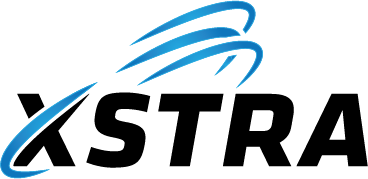Executive Summary
XSTRA keeps customer access networks on IPv4 for now to ensure maximum compatibility. We enable IPv6 at the WAN/DMZ only when we state it is necessary. We do not pre-provision IPv6 to customers; IPv6 space is allocated on request. If an IPv6-only service needs to talk to IPv4 (or vice-versa), we can provide standards-based translation at the edge. Administration fees apply for both dedicated IPv4 assignments and IPv6 allocations.
Contents
- Governance & Precedence
- Policy Stance (Plain English)
- Customer Tiers & Addressing
- WAN/DMZ Addressing & Routing
- Deployment Profiles
- Translation & Compatibility Services
- Security Policy (v4/v6 Parity)
- Operational Guardrails
- Rollout Phases & Ownership
- Support Playbooks
- Compliance & Logging
- One-Paragraph Summary (Non-Technical)
1) Governance & Precedence
If a specific product, customer, or network policy explicitly states it takes precedence, it overrides this policy. Otherwise, this document serves as the catch-all where no other policy covers the topic.
2) Policy Stance (Plain English)
- Access LANs: IPv4-only by default (NAT44), for maximum device compatibility.
- WAN/DMZ IPv6: Enabled only when we say it’s necessary (peering/cloud/perf/requirements).
- No pre-provisioned IPv6: IPv6 space is allocated on request or when required—fees apply.
- Interoperability: Edge translation available (DNS64/NAT64; 464XLAT where appropriate).
- Fees: Administration fee applies to both dedicated IPv4 and any IPv6 allocations.
3) Customer Tiers & Addressing
| Tier | IPv4 | IPv6 (on request) | Notes / Fees |
|---|---|---|---|
| A-Class (Business/Premium) | Option to secure a dedicated public IPv4 from XSTRA | /56 by default; /48 for complex segmentation | Administration fee applies to IPv4 and IPv6 allocation; CGNAT optional as fallback |
| Standard (Residential/SMB) | CGNAT by default; static mapping by exception | Allocated on request (usually /56) | Fees apply to any IPv6 allocation; static CGNAT mapping may incur fees |
| Lite / IoT / Single-LAN | CGNAT egress; inbound by exception only | Allocated on request (commonly /64) | Fees apply to IPv6 allocation; inbound exceptions may incur fees |
4) WAN/DMZ Addressing & Routing
- Default: WAN is IPv4-only.
- When WAN/DMZ IPv6 is explicitly required:
- Obtain IPv6 /64 (or /127 for p2p) for the link.
- If internal IPv6 is also required, allocate a PD on request (/56 default; /48 for complex/A-Class).
- When enabled, maintain both 0.0.0.0/0 and ::/0 toward the ISP.
- DMZ/Edges: Public-facing endpoints may be dual-stack where needed (A+AAAA); back-ends can remain IPv4.
| IPv4-only WAN (Default) | Dual-Stack WAN (Opt-in) |
|---|---|
| Simplest ops; no v6 routing/firewall to maintain on WAN. | Required only when specifically stated (peering/cloud/perf). Apply stateful IPv6 firewall; allow essential ICMPv6. |
5) Deployment Profiles
| Profile | When to use | Key settings |
|---|---|---|
| A – IPv4-only access + IPv4-only WAN (Default) | Baseline for most sites | LANs IPv4+NAT44; WAN IPv4-only; translation/proxies available if needed |
| B – IPv4-only access + Dual-Stack WAN/DMZ (Opt-in) | Cloud/peer/perf requires v6 at edge | Enable v6 on WAN/DMZ; optional DNS64/NAT64 (+ 464XLAT) for v4-only clients hitting v6-only resources |
| C – Dual-Stack Access (Opt-in, by exception) | Internal v6 specifically requested | Allocate PD on request; /64 per VLAN; retain IPv4 or provide 464XLAT for v6-only access |
6) Translation & Compatibility Services (On Request)
- DNS64/NAT64: v6-only ↔ v4-only interoperability at the edge; HA per PoP/site as needed (fees may apply).
- 464XLAT (CLAT on CPE): for apps using IPv4 literals on v6-only access; core provides NAT64 (fees may apply).
- CGNAT (IPv4): Default for Standard/Lite; inbound pins by exception. A-Class can secure a dedicated IPv4 (admin fee applies).
- Inbound v4 → v6-only services: Prefer dual-stack front ends (proxy/LB/CDN). SIIT-DC considered for DC use-cases.
7) Security Policy (v4/v6 Parity)
- Stateful firewalls on all WAN/DMZ edges; drop unsolicited inbound; allow established/related; allow essential ICMPv6 (RA/ND/PMTUD).
- No NAT66 in customer access designs. Use routing + PD; translation only for v6↔v4 interop.
- BCP-38/uRPF at edges; RPKI (ROAs) + IRR for any announced v6 aggregates; DDoS controls with parity for v4/v6.
- Telemetry: sFlow/NetFlow/IPFIX including v6; monitor ND/RA counters; record PD assignments when allocated.
8) Operational Guardrails (MUST/SHOULD/MAY)
- MUST keep access LANs IPv4 by default; any IPv6 enablement is opt-in and documented.
- MUST NOT reuse WAN /64 on LANs.
- MUST NOT disable ICMPv6 on segments where v6 is enabled.
- MUST keep parity of firewall/IDS/IPS/DDoS between v4 and v6 on segments where v6 is enabled.
- SHOULD use /127 for router-router links where IPv6 is enabled and supported.
- SHOULD NOT announce per-customer /64s on the DFZ; aggregate to /48 or shorter when advertising.
- MAY allocate IPv6 PD (/56 default; /48 on request) when a business/technical need is established (fees apply).
9) Rollout Phases & Ownership
| Phase | Scope | Owner | Timing |
|---|---|---|---|
| 1 – Now | WAN IPv4-only by default; define approval criteria for enabling WAN/DMZ IPv6; keep translation capability available on request | Core NetOps | Immediate |
| 2 – As Needed | Update CPE images so IPv6 features are available but disabled by default; add CRM/order flags (IPv6 on request; dedicated IPv4 with admin fee); refresh Support KB | Access/Field Ops | Determined by XSTRA |
| 3 – As Needed | For sites with IPv6 enabled: expand telemetry/alerting; validate 464XLAT with key apps; publish operational exceptions | NOC/SecOps | Determined by XSTRA |
10) Support Playbooks
- “Why IPv6 if our LAN is IPv4?” Dual-stack at the edge can improve reach/performance to some clouds/CDNs when explicitly required. LAN remains IPv4 unless requested.
- “We can’t reach a site from IPv4-only LAN.” If the destination is IPv6-only, offer DNS64/NAT64 at the edge or a dual-stack proxy in the DMZ (fees may apply).
- “We need inbound IPv4 to our service.” A-Class can secure a dedicated IPv4 (admin fee). Otherwise consider CGNAT static mapping by exception or dual-stack front end.
- “Multiple VLANs?” If IPv6 is requested, allocate PD (/56 default; /48 for complex) and assign /64 per VLAN.
11) Compliance & Logging
- Retain NAT64/CGNAT translation logs per policy and law.
- Record any IPv6 allocations (PD size, WAN /64 or /127) in CRM/OSS with timestamps.
- Maintain ROAs for any announced IPv6 aggregates; keep IRR (route6/AS-SET) objects updated.
12) One-Paragraph Summary (Non-Technical)
XSTRA keeps customer access networks on IPv4 for maximum compatibility. We enable IPv6 at the WAN/DMZ only when we state it is necessary.
We do not pre-provision IPv6; IPv6 is allocated on request.
If an IPv6-only service needs to talk to IPv4 (or vice-versa), we can provide standards-based translation at the edge.
Need more help with this?
© 2021–2025 XSTRA Group Pty Ltd (Australia). All rights reserved.


